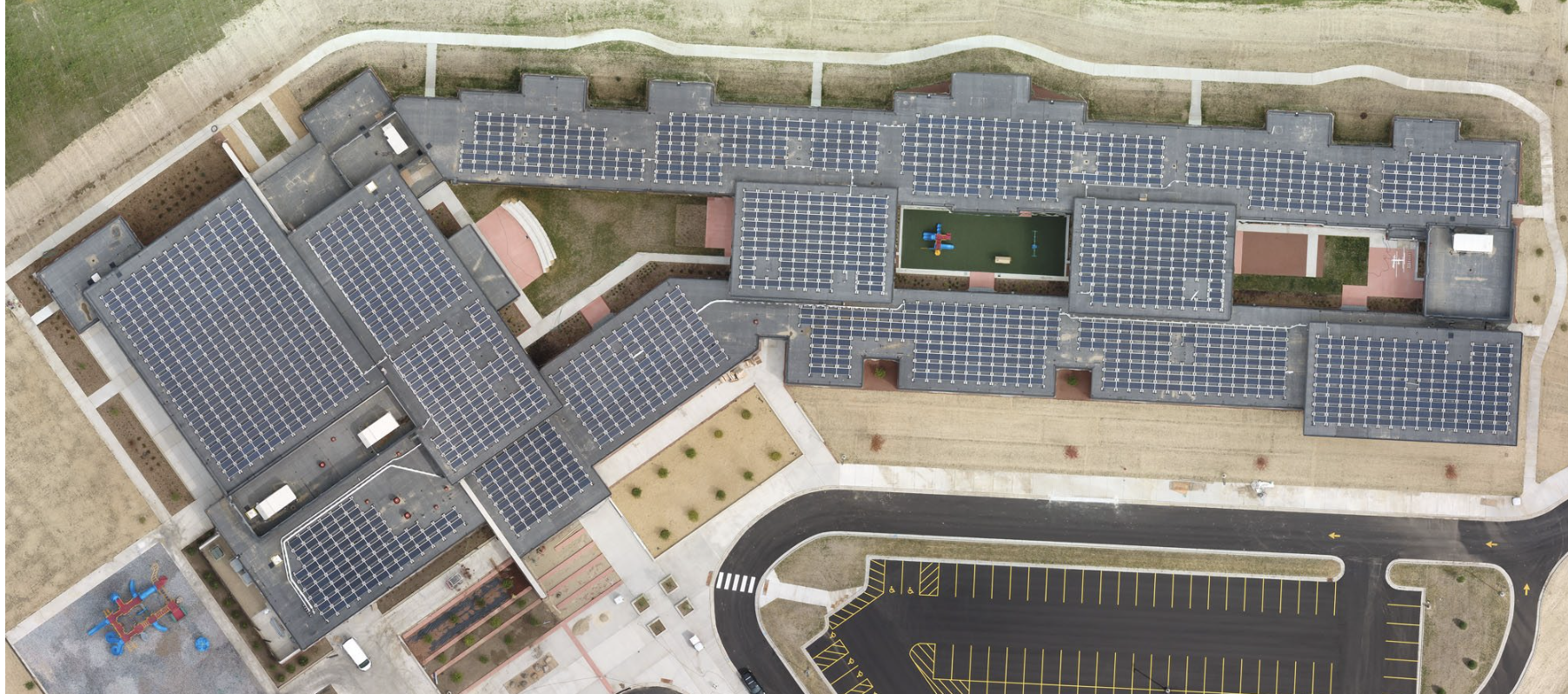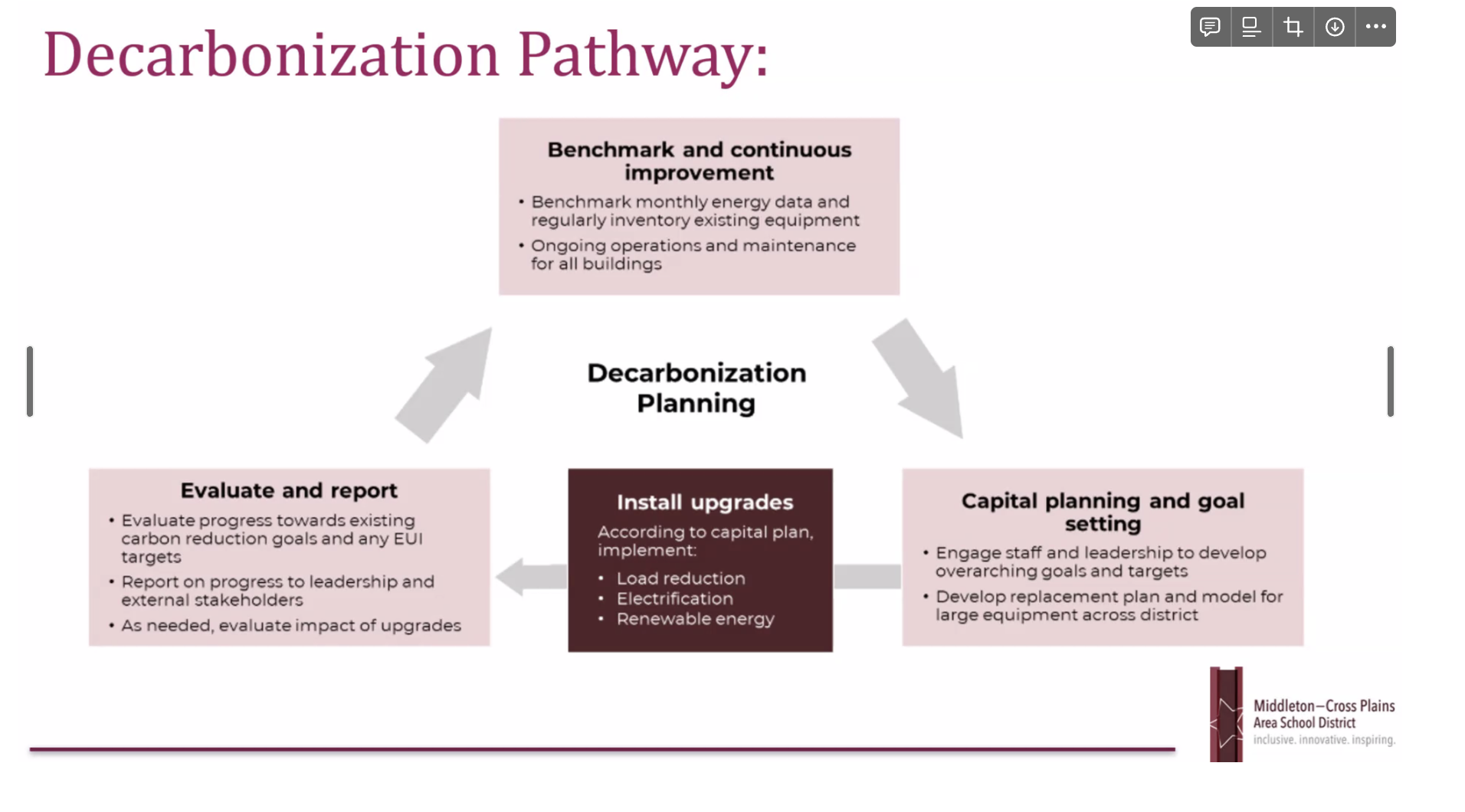Learning from Wisconsin Districts who are leading on clean energy!
Many schools across Wisconsin have been actively pursuing clean energy technologies, even prior to the arrival of the IRA. Our friends at the non-profit Slipstream highlighted best practices of Schools Leading a Clean Energy Transition in this brief. Some of the districts profiled include:
Oregon School District: The home of Forest Edge Elementary, Wisconsin’s first net zero school. The district’s journey to net zero started with the installation of one solar panel in 2014, which progressed to solar and geo at the High School, Middle School, and Brooklyn Elementary, followed by the opening of Forest Edge. Today the district has over 1MW in solar.
Andy Weiland, Business Manager at the Oregon School District, describes the district’s two-prong approach to decarbonization which focuses on (1) identifying operational approaches to save money and put funds back in the classroom and (2) make it real for students so they continue to learn.
Sun Prairie School District: Utilizes geothermal and solar across multiple buildings for a total of 775 active heat pumps! First geothermal project was installed 2005 and since then has realized $15M in savings from efficiency.
Middleton-Cross Plains Area School District: Uses geothermal energy systems at three of its schools. Its School District Energy Plan is a model of how to think about decarbonization strategy and offers the following framework:
To further share these learnings Slipstream held a webinar at the start of June titled “Decarbonizing schools: From starting points to advanced strategies” highlighting lessons and learnings from a 18 month collaborative planning process across these four districts as they worked to shape actionable decarb frameworks for their districts.
Further north, The Menasha School District is currently embarking on a $99.7M Net Zero New School Construction Project. The 223,000 square foot building will eventually house 1,000 middle school students across grades 5 - 8. The 1.15 MW system will include solar panels, battery energy storage, microgrids, and geothermal heat pumps, all of which qualify for Direct Pay.
Because the project utilized workers (almost 150 workers onsite at the height of the project!) that met the prevailing wage and apprenticeship labor standard, the district anticipates receiving a reimbursement of $3.8M from Direct Pay. Approximately $1M of this credit is because the district is installing a geothermal system that utilized domestic content. In addition to the $3.8M in Direct Pay Reimbursement, the district anticipates an additional savings of $135,000 annually in energy costs. Shovels were in the ground in November 2023 and the energy projects will be put into service by June 2025.
The district was recently highlighted in a May webinar hosted by Blue Green Alliance “How to Cut Energy Costs Using Direct Pay for Public Buildings and How Local Unions Can Benefit.” Check out the recording and slides.



